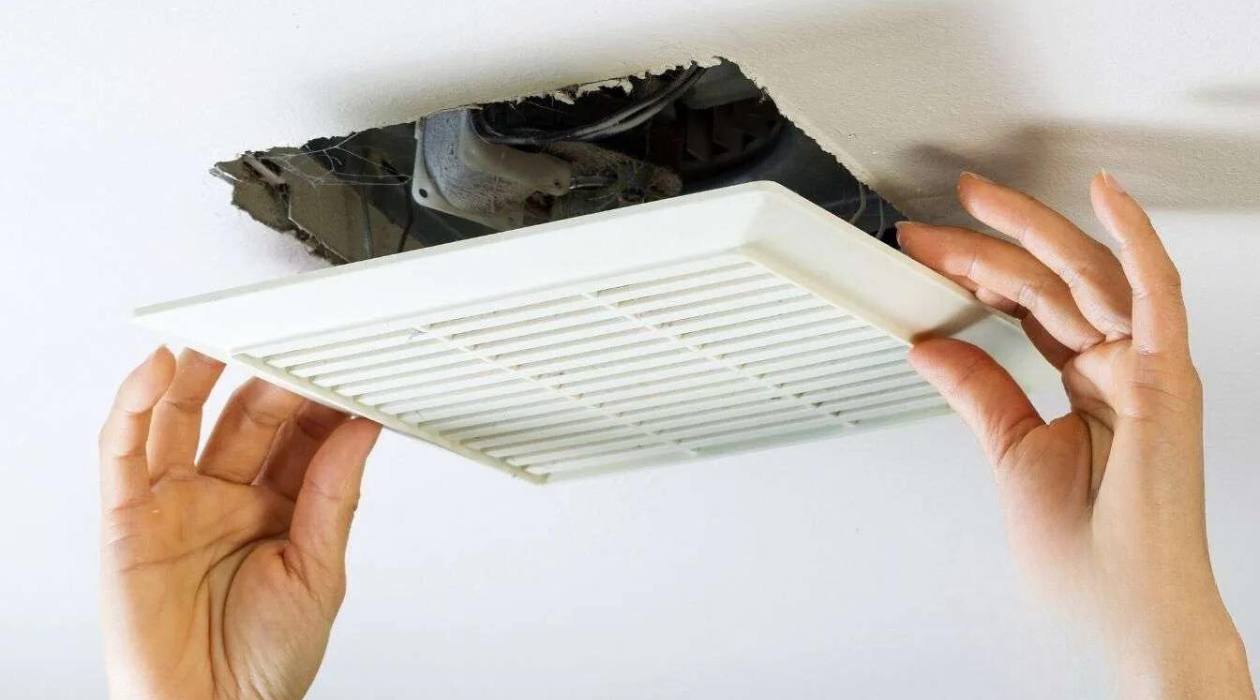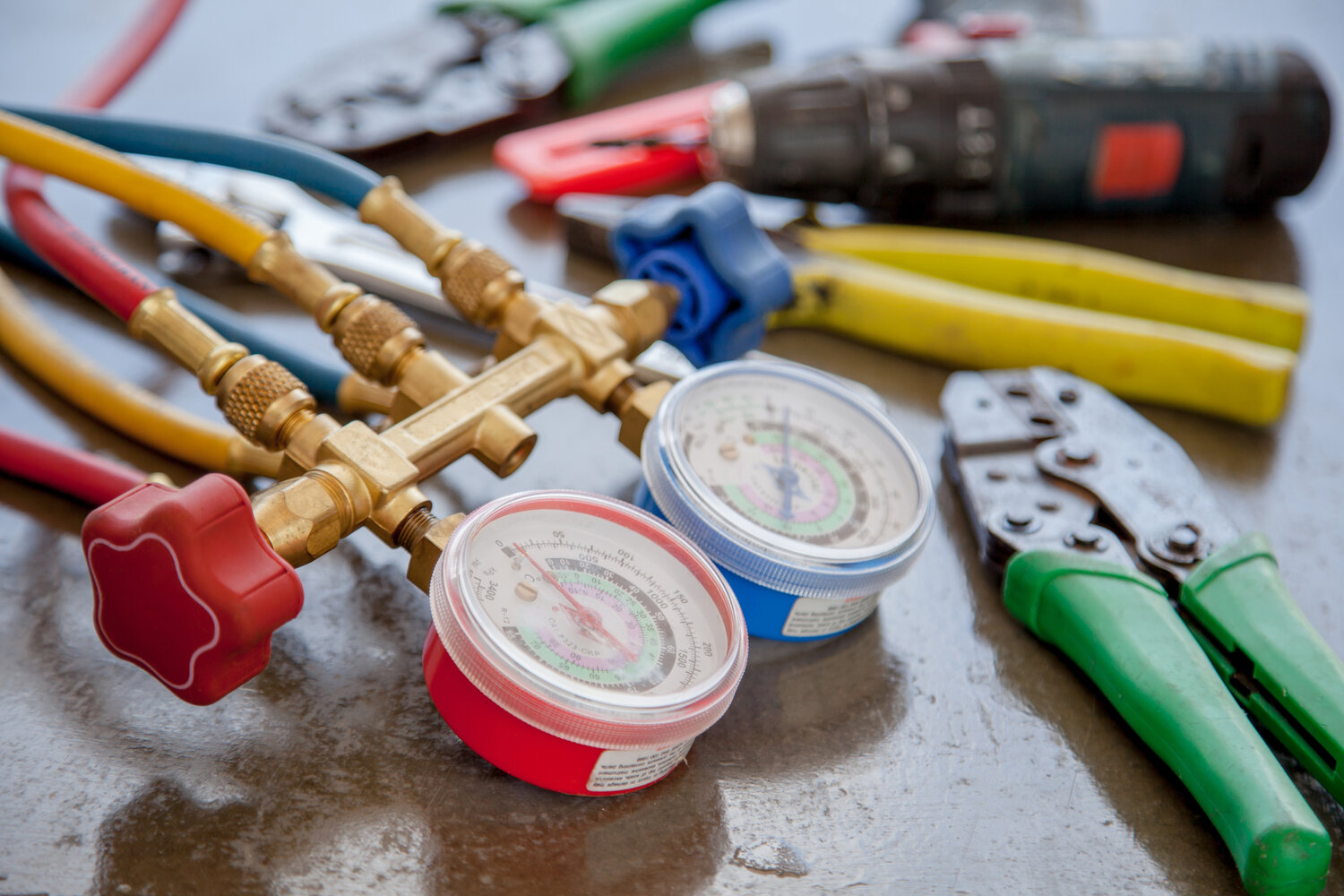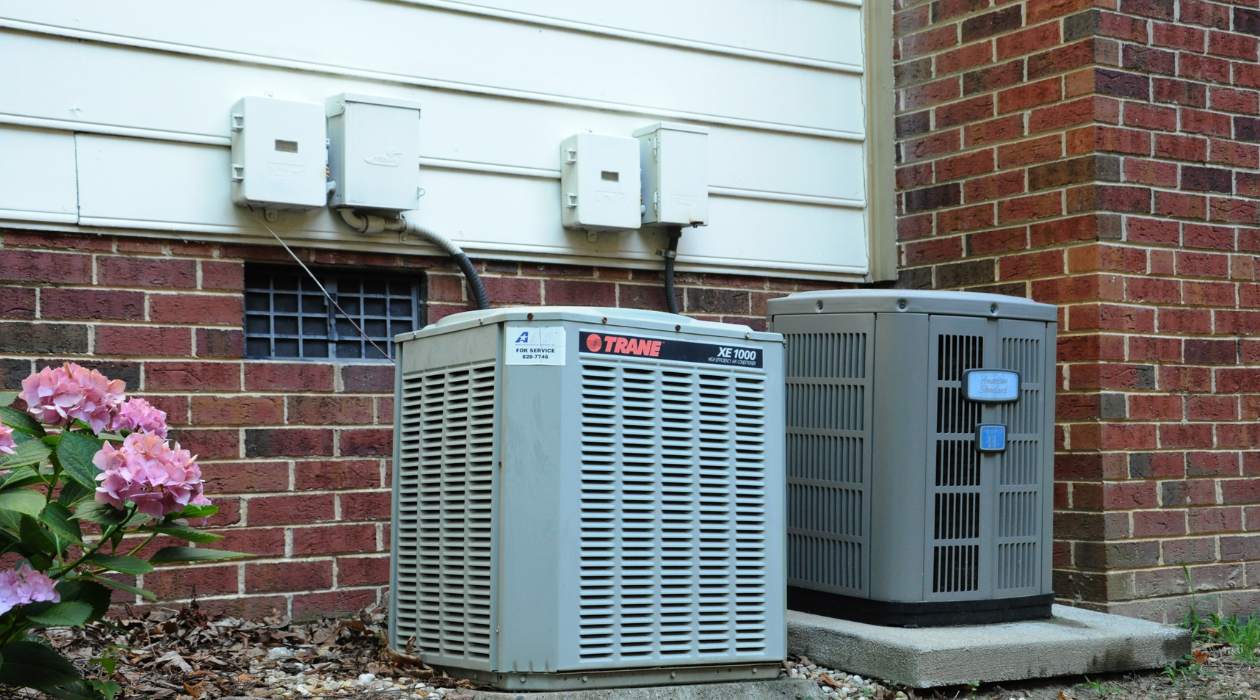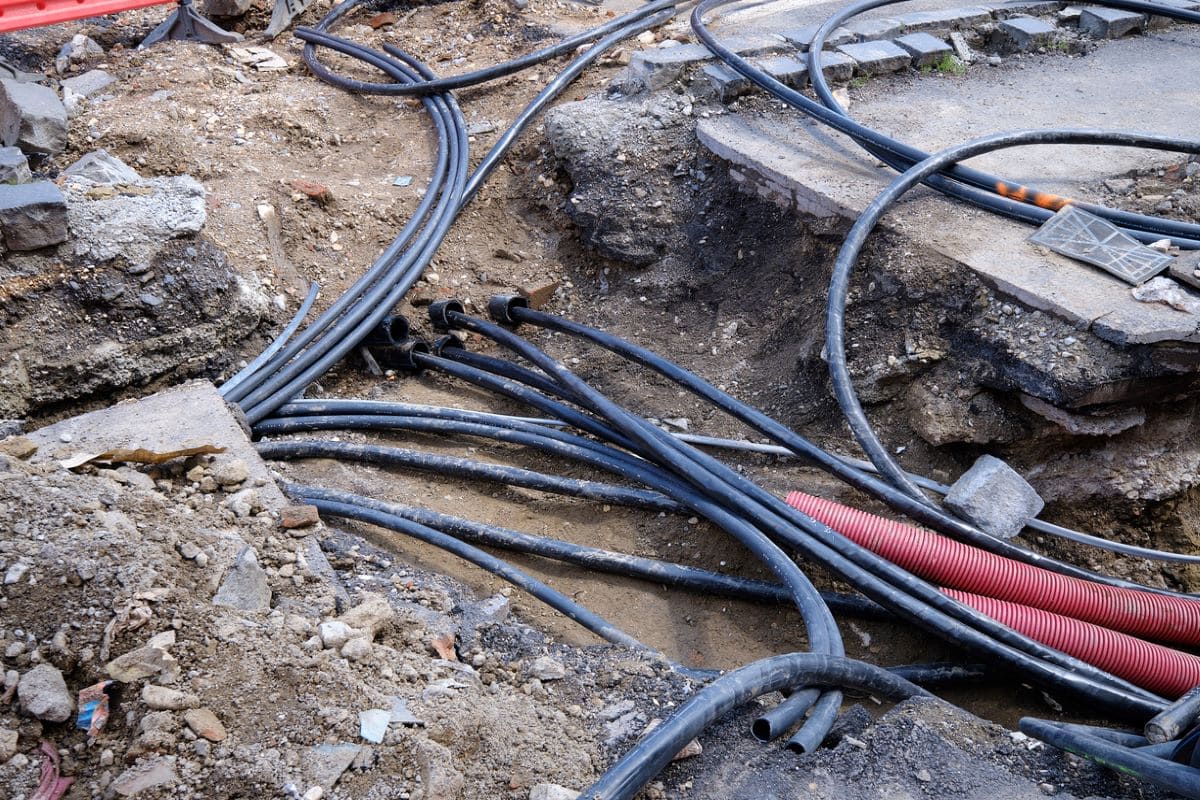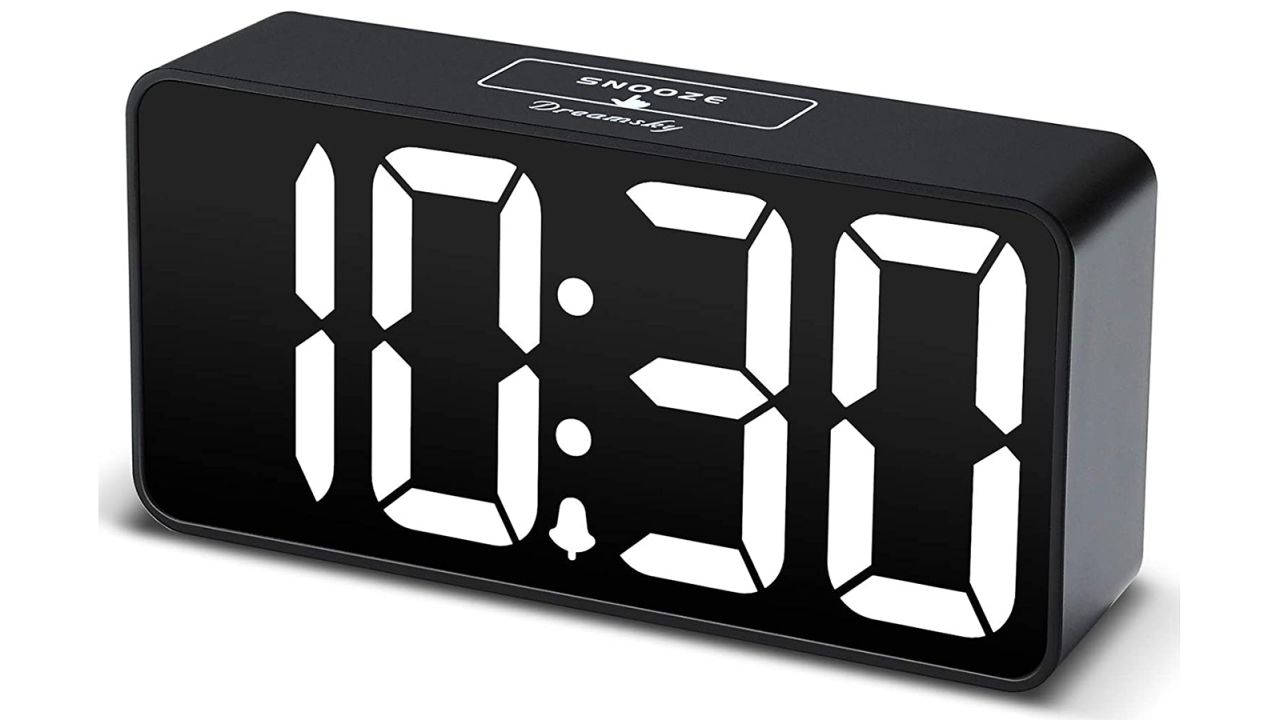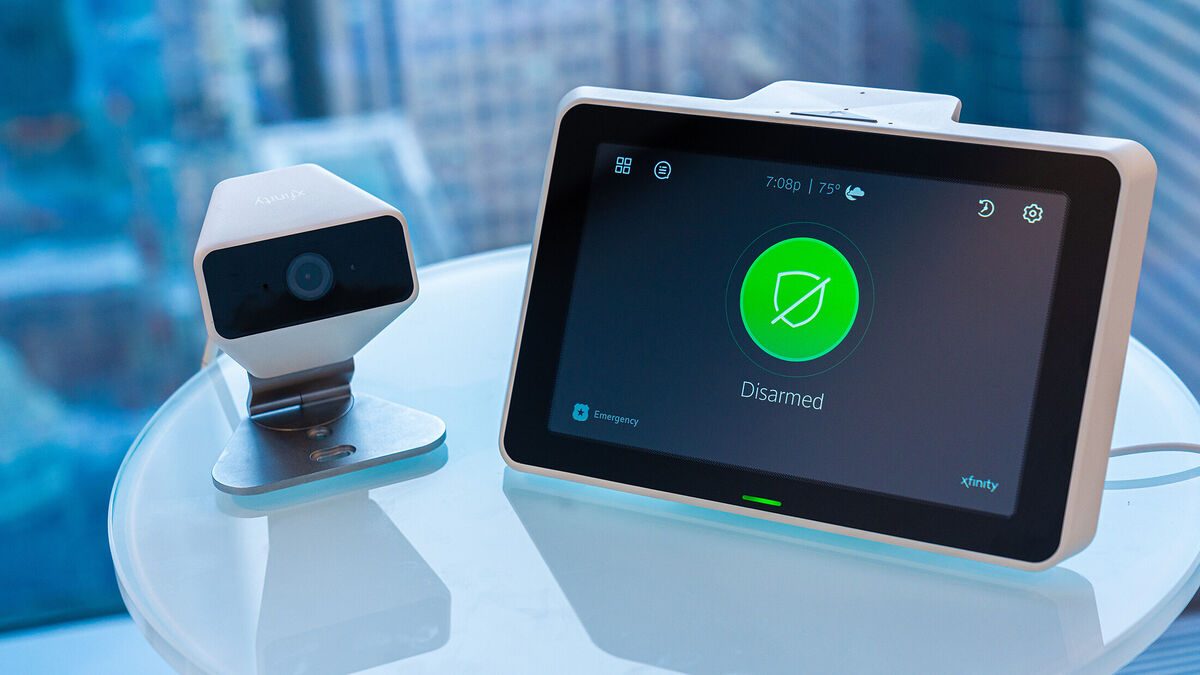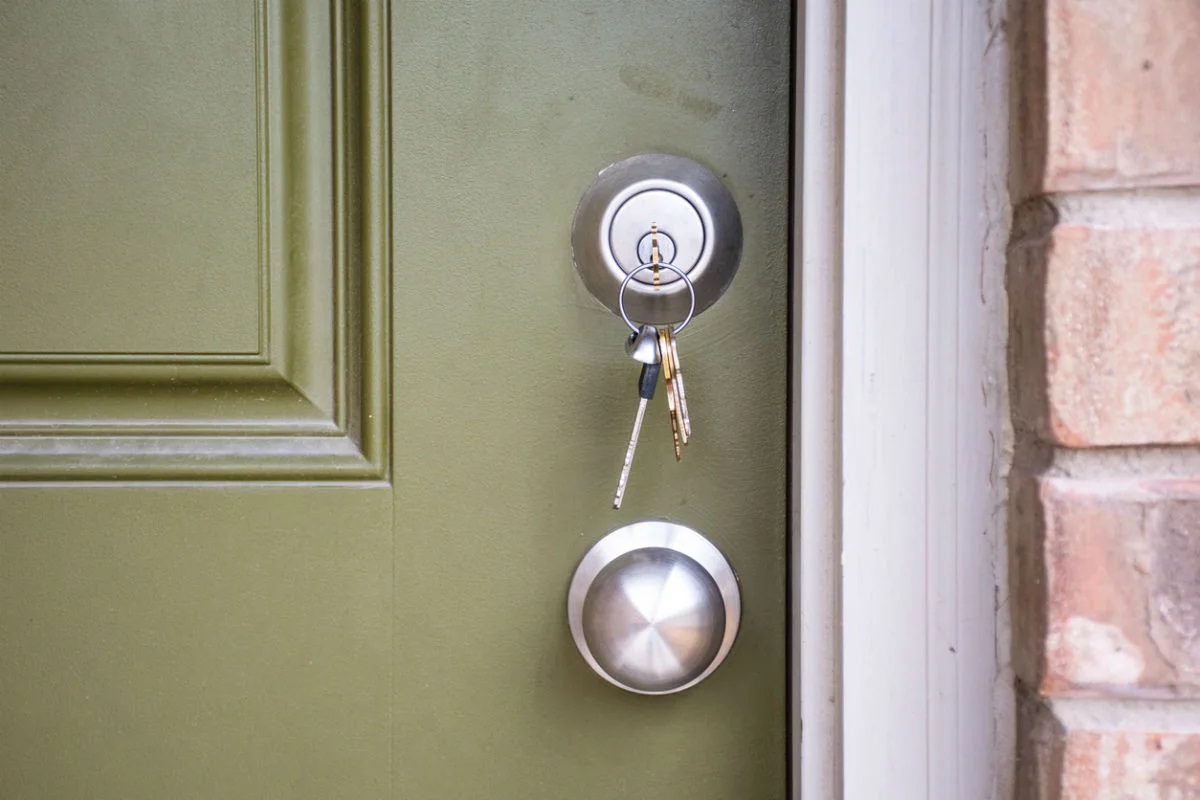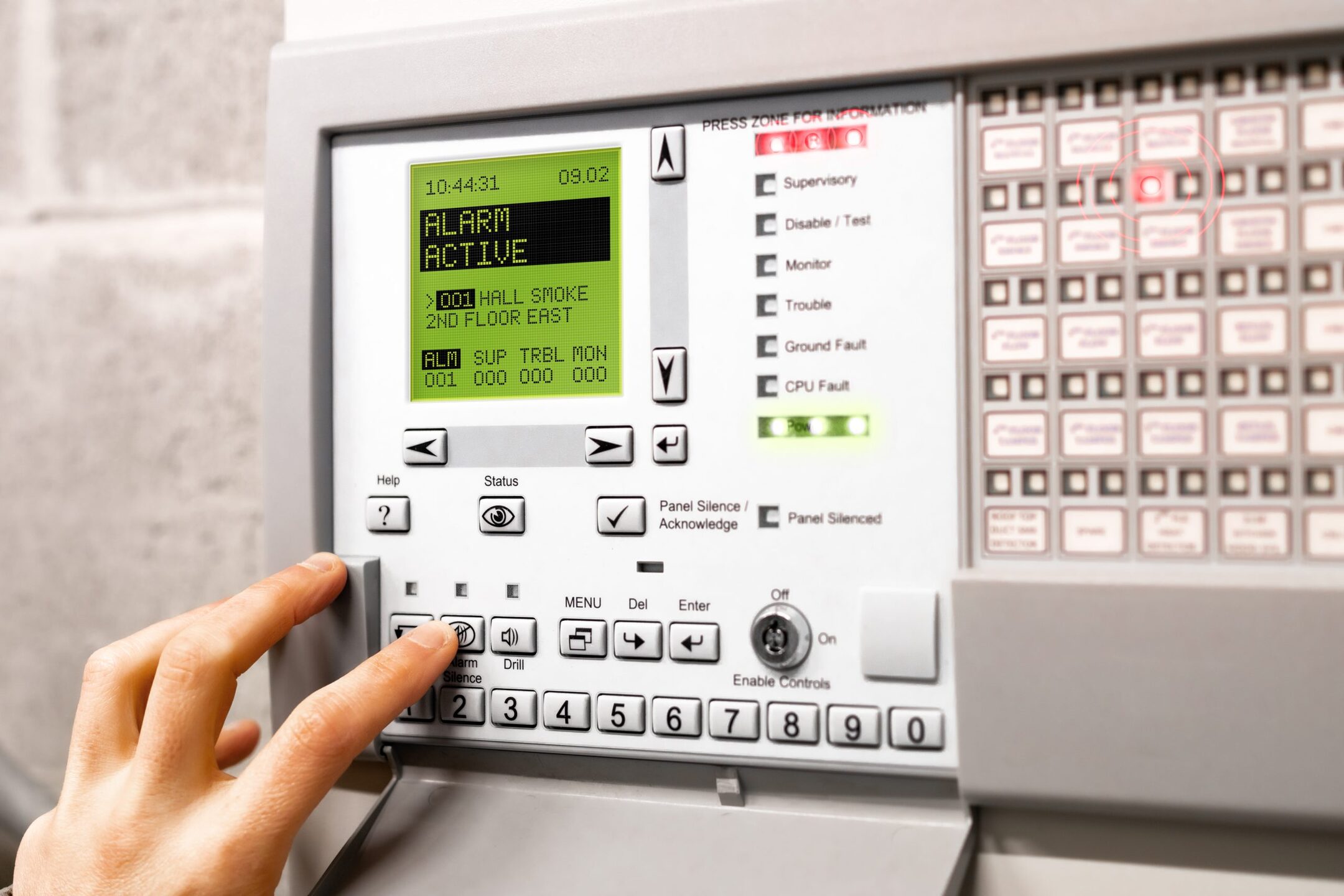Home>Home Security and Surveillance>How Do You Reduce False Positive Alerts From Alarm Systems?
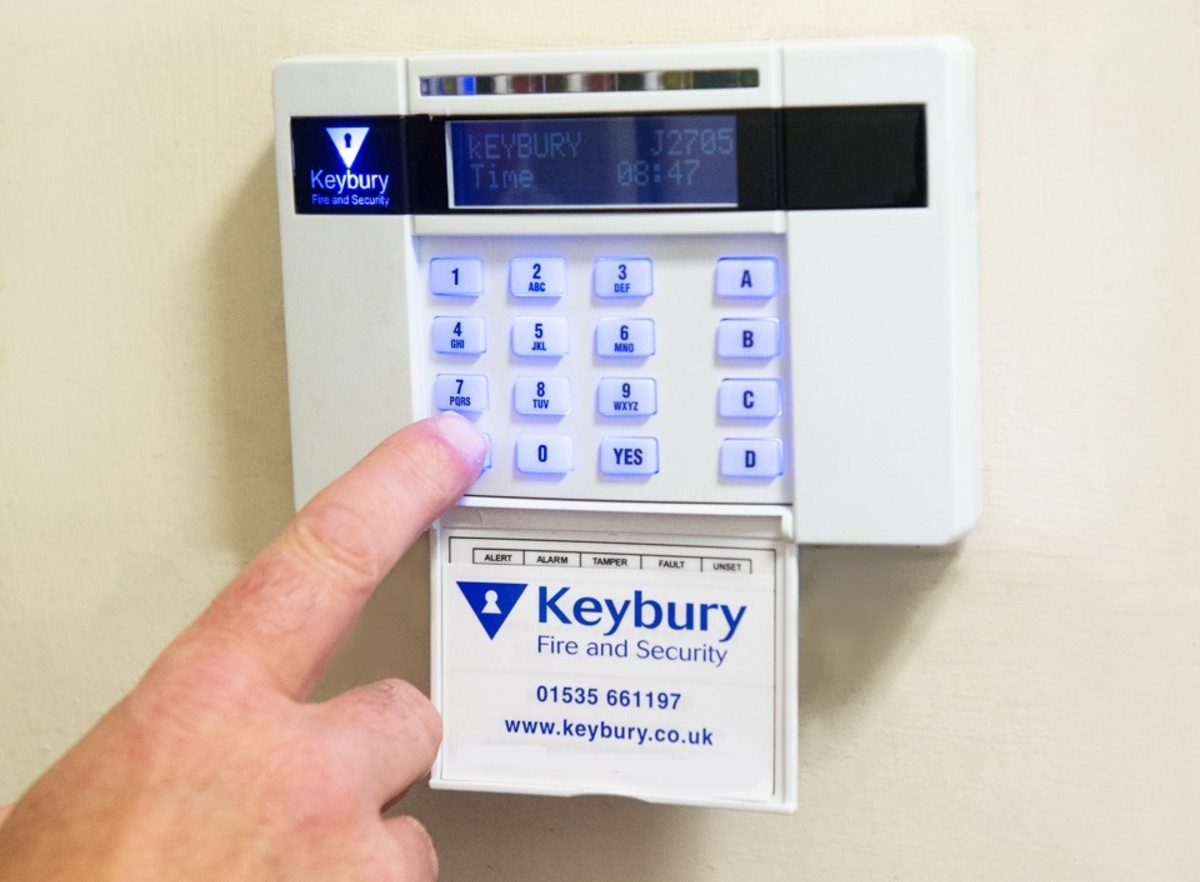

Home Security and Surveillance
How Do You Reduce False Positive Alerts From Alarm Systems?
Modified: March 6, 2024
Learn effective strategies to minimize false positive alerts in your home security and surveillance alarm systems. Enhance the reliability of your security system and gain peace of mind.
(Many of the links in this article redirect to a specific reviewed product. Your purchase of these products through affiliate links helps to generate commission for Storables.com, at no extra cost. Learn more)
Introduction
In today’s fast-paced world, home security and surveillance systems have become essential for ensuring the safety of our loved ones and protecting our property. These advanced systems are equipped with various sensors and detectors that can detect any unusual activity and trigger alerts accordingly. While these alarms are designed to keep us safe, they can sometimes generate false positive alerts, causing unnecessary panic and inconvenience.
A false positive alert occurs when an alarm system is triggered by something other than an actual security threat. These alerts can be due to various reasons, including technical glitches, environmental factors, or even minor movements that may not necessarily indicate a breach in security. While false positive alerts are inevitable to some extent, it is crucial to minimize them to ensure the effectiveness and reliability of the alarm system.
In this article, we will delve into the challenges of false positive alerts in alarm systems, examine the common causes behind them, and explore strategies to reduce their occurrence. By understanding these factors and implementing best practices, homeowners can improve the efficiency and performance of their home security and surveillance systems.
Key Takeaways:
- Fine-tuning alarm thresholds and implementing machine learning algorithms can help reduce false alarms in home security systems, ensuring accurate threat detection while minimizing disruptions.
- Utilizing advanced sensor technologies and enhancing data analysis can improve the reliability of alarm systems, providing effective security measures with minimal false positive alerts.
Read more: How Often Is A Burglar Alarm False
Understanding False Positive Alerts
False positive alerts occur when an alarm system incorrectly identifies a non-threatening event as a security breach. These can range from motion sensors being triggered by pets or moving objects to environmental factors such as strong gusts of wind or changes in lighting conditions. While false positive alerts can be frustrating, they are an inherent part of alarm systems that aim to strike a balance between sensitivity and accuracy.
One of the primary reasons behind false positive alerts is the need to ensure that alarm systems are sensitive enough to detect genuine threats. Manufacturers design these systems to be highly responsive, as missing a genuine security breach could have severe consequences. However, this sensitivity can also lead to an increased likelihood of false alarms triggered by innocuous events.
It is essential to understand that false positive alerts are not indicative of a faulty or ineffective system. On the contrary, they demonstrate that the system is actively monitoring and detecting potential threats. However, excessive false positive alerts can undermine the system’s credibility and lead to complacency or even disregard for legitimate alerts.
Therefore, reducing false positive alerts is crucial for maintaining the reliability and effectiveness of alarm systems. By identifying the root causes of false alarms and implementing targeted solutions, homeowners can significantly enhance their security systems’ performance while minimizing unnecessary disruptions.
Challenges of False Positive Alerts in Alarm Systems
While alarm systems play a crucial role in safeguarding our homes, businesses, and loved ones, false positive alerts pose significant challenges. These challenges can impact the trustworthiness and overall effectiveness of the security system. Here are some key challenges associated with false positive alerts in alarm systems:
1. Alarm Fatigue: Excessive false positive alerts can lead to alarm fatigue, where users become desensitized to the alerts and may ignore or dismiss them. This can be detrimental as it increases the chances of missing genuine security breaches.
2. Inconvenience and Disruption: Frequent false positive alerts can cause unnecessary disruptions, interrupting daily activities and inconveniencing homeowners. This can lead to frustration and a loss of trust in the alarm system.
3. Resource Drain: False positive alerts can consume valuable time and resources for homeowners and security personnel. Frequent false alarms may result in wasted efforts investigating non-existent threats, diverting attention from genuine security concerns.
4. Increased Maintenance Costs: False positive alerts can lead to unnecessary service calls for alarm system maintenance or repairs. This can incur additional costs for homeowners, impacting their budget and overall satisfaction with the system.
To address these challenges, it is crucial to understand the root causes of false positive alerts in alarm systems. By identifying and mitigating these causes, homeowners can optimize the performance of their security systems while minimizing the impact of false alarms.
Common Causes of False Positive Alerts
False positive alerts in alarm systems can have various underlying causes. Understanding these common causes is essential for implementing effective strategies to reduce false positives. Here are some of the most prevalent causes:
1. Environmental Factors: Environmental conditions, such as strong gusts of wind, changes in lighting conditions, or even heavy rain, can trigger false positive alerts. These factors can affect motion sensors, causing them to detect movement that is not indicative of a security breach.
2. Pets and Wildlife: Pets and wildlife can inadvertently trigger motion sensors, leading to false positive alerts. Small pets moving within the premises or animals passing by the sensors’ range can be misinterpreted as potential threats.
3. System Sensitivity Settings: Alarm systems have adjustable sensitivity settings to cater to various environments and user preferences. Incorrectly calibrated or overly sensitive settings can result in false positive alerts, as even slight movements or minor disturbances can trigger alarms.
4. Equipment Malfunctions: Technical malfunctions or faults in the alarm system components can lead to false positive alerts. These issues can range from faulty sensors and detectors to wiring problems or power supply disruptions.
5. User Error: User error, such as incorrect system configuration or accidental actions, can contribute to false positive alerts. Disarming or arming the system incorrectly, mishandling remote controls, or failing to acknowledge false alarms promptly can affect the system’s performance and generate unnecessary alerts.
6. Interference from Other Devices: Interference from other electronic devices or wireless signals can trigger false positive alerts in alarm systems. This interference can disrupt the communication between the sensors and the control panel, leading to false alarms.
By identifying these common causes of false positive alerts, homeowners can take proactive measures to address and mitigate them. Understanding the specific factors contributing to false positives allows for targeted solutions tailored to their unique situation.
Strategies to Reduce False Positive Alerts
Reducing false positive alerts in alarm systems requires a combination of smart technological solutions, system configuration adjustments, and user practices. By implementing the following strategies, homeowners can minimize false alarms while maintaining a high level of security:
1. Fine-tuning Alarm Thresholds: Adjusting the sensitivity settings of motion sensors and other detection devices can help fine-tune the alarm thresholds. Finding the right balance between sensitivity and eliminating false positives is crucial. Homeowners can work with security professionals to optimize these settings based on their specific environment and needs. 2. Implementing Machine Learning Algorithms: Integrating machine learning algorithms into alarm systems can significantly improve accuracy and reduce false positive alerts. These algorithms can learn patterns and distinguish between genuine security threats and non-threatening events, minimizing false alarms over time. 3. Utilizing Advanced Sensor Technologies: Investing in advanced sensor technologies that offer improved accuracy and reliability can enhance the performance of alarm systems. For example, using dual-technology motion sensors that combine infrared and microwave detection can help reduce false positive alerts caused by environmental factors or pets. 4. Improving Alarm System Configuration and Settings: Ensuring that the alarm system is properly configured and updated can reduce false positive alerts. Regularly reviewing and adjusting settings such as entry/exit delay times, alarm zones, and specific triggering conditions can help optimize the system’s performance and minimize false alarms. 5. Enhancing Data Analysis and Pattern Recognition: Leveraging sophisticated data analysis techniques and pattern recognition algorithms can help differentiate between normal activities and genuine security threats. By analyzing past alarm data and identifying patterns, the system can make more accurate decisions, reducing the occurrence of false positives. Implementing a combination of these strategies can significantly improve the accuracy and reliability of alarm systems, reducing false positive alerts. It is important to consult with security professionals or system providers to ensure that these strategies are implemented correctly and tailored to the specific needs of the home.
Read more: Why Do Smoke Detectors Give False Alarms?
Fine-tuning Alarm Thresholds
One effective strategy for reducing false positive alerts in alarm systems is to fine-tune the alarm thresholds. Alarm thresholds refer to the sensitivity settings of the system’s sensors and detectors. By adjusting these settings, homeowners can optimize the system’s ability to detect genuine security threats while minimizing false alarms caused by non-threatening events.
The alarm threshold determines the level of activity or motion required to trigger an alert. A system set to high sensitivity may be prone to false positives, as even minor movements or environmental changes can be detected as potential threats. On the other hand, a system with low sensitivity may miss genuine security breaches, rendering it ineffective.
To fine-tune alarm thresholds effectively, homeowners should consider the following steps:
- Assess the Environment: Understanding the specific characteristics and dynamics of the environment in which the alarm system is installed is crucial. Factors such as the presence of pets, frequent changes in lighting conditions, or nearby sources of interference should be taken into account.
- Test and Observe: Conduct thorough testing of the alarm system, both during different times of the day and under varying environmental conditions. This process involves intentionally triggering the alarm system under controlled circumstances to assess its sensitivity and identify potential areas for improvement.
- Adjust Sensitivity Settings: Based on the observations and test results, homeowners can then adjust the sensitivity settings of the sensors and detectors. This step requires finding the right balance between sensitivity and eliminating false positives. Incremental adjustments should be made, taking into consideration the environment and any specific challenges identified during testing.
- Iterate and Refine: Fine-tuning alarm thresholds is an iterative process. Homeowners should be prepared to make further adjustments if necessary, based on the system’s performance and the occurrence of false alarms. Regular monitoring and evaluation can help identify any recurring patterns or areas that require additional fine-tuning.
Fine-tuning alarm thresholds is a meticulous task that may require the expertise of security professionals. It is essential to work closely with them to ensure the system is optimized for the specific environment and security needs of the home. Additionally, regularly revisiting and reevaluating the alarm thresholds is recommended, as changes in the environment or system components may require further adjustments to maintain an optimal balance between sensitivity and accuracy.
Regularly review and update alarm system settings to ensure they are properly calibrated for the environment. This can help reduce false positive alerts.
Implementing Machine Learning Algorithms
Implementing machine learning algorithms is a powerful strategy for reducing false positive alerts in alarm systems. Machine learning algorithms can analyze and learn from vast amounts of data, enabling them to distinguish between genuine security threats and non-threatening events. By continuously improving their accuracy over time, these algorithms can significantly reduce false alarms.
Here is how homeowners can leverage machine learning algorithms to enhance their alarm systems:
- Data Collection: The first step in implementing machine learning algorithms is to collect a sufficient amount of data. This data can include historical alarm data as well as information about the environment in which the system operates. The more diverse and representative the data, the better the algorithm’s performance.
- Feature Engineering: Feature engineering involves selecting and transforming relevant data attributes, or features, to make them suitable for the machine learning algorithms. It may involve extracting temporal patterns, frequency of occurrences, or other relevant statistical measures that can enhance the algorithm’s ability to differentiate between true threats and false positives.
- Algorithm Training: Using the collected and engineered data, the machine learning algorithm is trained to recognize patterns and make predictions. The algorithm learns from the data and develops a model that can be used to categorize future events as either genuine security threats or non-threatening events.
- Validation and Improvement: Once the model is trained, it is important to validate its performance using a separate set of data. This validation ensures that the model performs accurately and effectively in real-world scenarios. If necessary, adjustments can be made to enhance the model’s performance before deploying it in the live alarm system.
- Continuous Learning: An advantage of machine learning algorithms is their ability to learn and adapt over time. By continuously collecting and feeding new data into the algorithm, the system can adapt to evolving patterns and improve its accuracy in distinguishing between true threats and false positives.
Implementing machine learning algorithms in alarm systems requires expertise in data analysis and software development. Working with professionals who specialize in this field can ensure the effective integration of machine learning algorithms into the alarm system.
By leveraging machine learning algorithms, homeowners can significantly reduce false positive alerts, improve the accuracy of their alarm systems, and enhance overall security without compromising on sensitivity to genuine threats.
Utilizing Advanced Sensor Technologies
Utilizing advanced sensor technologies is a valuable strategy for reducing false positive alerts and improving the accuracy of alarm systems. These technologies are designed to provide more reliable and precise detection, enabling homeowners to distinguish between genuine security threats and non-threatening events more effectively.
Here are some examples of advanced sensor technologies that can be utilized:
- Dual-Technology Motion Sensors: Traditional motion sensors can be triggered by both human movement and environmental factors, such as pets or moving objects. Dual-technology motion sensors combine multiple detection methods, such as both infrared and microwave, to minimize false positives by requiring confirmation from both technologies before triggering an alarm. This ensures that only suspicious activity is detected, reducing false alarms caused by innocuous events.
- Video Analytics: Video analytics technology uses intelligent algorithms to analyze video footage captured by surveillance cameras. It can detect specific events or behaviors, such as human intrusion, loitering, or object removal, while ignoring non-threatening activities. Video analytics can significantly reduce false positive alerts by providing a more accurate assessment of potential security threats.
- Acoustic Sensors: Acoustic sensors can detect and analyze sound patterns to identify potential security breaches. These sensors can differentiate between normal background noise and the specific acoustic signatures associated with breaking glass, forced entry, or other suspicious activities. By utilizing acoustic sensors, false alarms triggered by irregular noises or minor disturbances can be minimized.
- Advanced Environmental Detectors: Advanced environmental detectors can sense and analyze environmental conditions to differentiate between natural events and potential security threats. For example, they can differentiate between changes in lighting caused by weather conditions and those caused by an intruder. Such detectors can significantly reduce false positive alerts, ensuring that only genuine threats are responded to.
When implementing advanced sensor technologies, it is crucial to consider the specific security requirements and environmental factors of the property. Consulting with professionals specialized in security systems can help determine the most appropriate sensor technologies to incorporate into the alarm system.
By utilizing advanced sensor technologies, homeowners can enhance the accuracy and reliability of their alarm systems. These technologies minimize the occurrence of false positive alerts by providing more precise and targeted detection capabilities.
Improving Alarm System Configuration and Settings
Improving the configuration and settings of the alarm system is a crucial strategy for reducing false positive alerts. By optimizing these parameters, homeowners can enhance the system’s performance, minimize false alarms, and ensure that genuine security threats are promptly detected. Here are some key areas to focus on when improving alarm system configuration and settings:
- Entry/Exit Delay Times: Setting appropriate entry and exit delay times is essential to avoid false positive alerts triggered by accidental triggering of the alarm system during normal entry or exit routines. Adjusting these timings to allow sufficient time for disarming the system after entering or before exiting reduces the chances of false alarms.
- Alarm Zones: Configuring alarm zones allows homeowners to define specific areas within the property that should trigger an alert when breached. By carefully mapping out these zones based on the layout of the property and considering areas with potential false alarm triggers, such as windows near trees or doors near HVAC vents, false positives can be minimized.
- Specific Triggering Conditions: Fine-tuning specific triggering conditions can significantly reduce false positive alerts. For example, adjusting the sensitivity of glass break detectors or setting rules to disregard repeated activations from a specific sensor within a short timeframe can help eliminate false alarms caused by environmental factors or minor disturbances.
- User Codes and Permissions: It is important to review and manage user codes and permissions regularly. Each individual with access to the system should have a unique code, enabling accurate identification of who triggered the alarm. This helps prevent false alarms caused by user error or accidental activation.
- Notification Methods: Configuring the alarm system’s notification methods ensures homeowners receive alerts through the most appropriate channels. This may include text messages, push notifications, phone calls, or emails. By selecting the most reliable and preferred communication method, the likelihood of missing genuine security alerts due to ineffective notification can be minimized.
Improving alarm system configuration and settings requires a thorough understanding of the system’s capabilities and the specific needs of the property. Working with security professionals can ensure that the configuration is tailored to the unique environment while effectively reducing false positive alerts and enhancing the system’s accuracy.
Regular review and adjustment of the alarm system’s configuration and settings is recommended to accommodate any changes in the property layout, user requirements, or potential false alarm triggers. By keeping the configuration up to date and optimized, homeowners can maintain a reliable and efficient alarm system.
Read more: How To Reduce HVAC Noise
Enhancing Data Analysis and Pattern Recognition
Enhancing data analysis and pattern recognition capabilities is a valuable strategy for reducing false positive alerts in alarm systems. By leveraging advanced data analysis techniques and applying pattern recognition algorithms, homeowners can improve the system’s ability to differentiate between genuine security threats and non-threatening events.
Here are some key steps to enhance data analysis and pattern recognition in alarm systems:
- Data Collection: Collecting and analyzing a wide range of data is crucial for effective pattern recognition. This includes historical alarm data, sensor readings, and contextual information such as time of day, weather conditions, or occupancy patterns.
- Feature Extraction: Extracting relevant features from the collected data is essential for identifying patterns and distinguishing between true threats and false positives. This involves identifying key data attributes that are indicative of security breaches and building a robust feature set for analysis.
- Statistical Analysis: Applying statistical analysis techniques to the collected data enables the identification of trends, anomalies, and patterns associated with genuine security threats. Statistical algorithms can help quantify the probability of an event being a true threat, reducing false positive alerts.
- Pattern Recognition: Utilizing pattern recognition algorithms, such as machine learning or artificial intelligence techniques, can significantly enhance the system’s ability to recognize and classify security threats. These algorithms can learn from historical data and real-time inputs, enabling them to identify patterns and make accurate predictions.
- Integration with Video Analytics: Integrating data analysis and pattern recognition capabilities with video analytics can provide a more comprehensive understanding of security events. By analyzing video footage in conjunction with other sensor data, the system can detect specific behaviors or events more accurately while minimizing false alarms.
Enhancing data analysis and pattern recognition capabilities requires expertise in data science and analytics. Collaborating with professionals in this field can ensure the effective implementation and optimization of these techniques within the alarm system.
Regularly updating and fine-tuning data analysis algorithms and pattern recognition models is essential to adapt to evolving threats and minimize false positive alerts. By continually improving the system’s ability to differentiate between genuine threats and non-threatening events, homeowners can enhance the overall performance and reliability of their alarm systems.
Best Practices for Reducing False Positive Alerts
Reducing false positive alerts is crucial for maintaining the effectiveness and trustworthiness of alarm systems. By implementing the following best practices, homeowners can minimize false alarms and ensure that genuine security threats are accurately detected:
- Frequent Testing and Maintenance: Regularly test the alarm system to ensure it is functioning correctly. This includes checking sensors, detectors, and communication channels. Conduct routine maintenance to address any issues or malfunctions promptly.
- Proper Placement and Installation: Ensure sensors and detectors are strategically placed to maximize their effectiveness. Consider the layout of the property and potential false alarm triggers, such as moving objects or environmental conditions that may cause disturbances.
- User Education and Training: Provide proper user education and training to all individuals who have access to the alarm system. Ensure they understand how to operate the system correctly, including disarming and arming procedures, as well as how to respond appropriately to alarms.
- Regular System Updates: Keep the alarm system and associated software up to date with the latest firmware and software patches. This helps eliminate known issues and improves the system’s overall performance and reliability.
- Effective Communication: Maintain open and effective communication with the alarm system provider. Report any false positive alerts or unusual system behavior promptly to receive timely assistance and support.
- Monitor and Evaluate: Continuously monitor and evaluate the alarm system’s performance, including the frequency of false positive alerts. Analyze patterns and trends to identify areas for improvement and implement necessary adjustments to minimize false alarms.
- Integrate with Security Measures: Integrate the alarm system with other security measures, such as video surveillance or access control systems. This enables a more comprehensive approach to security, reducing the chances of false alarms caused by single event triggers.
- Professional Consultation: Consult with security professionals to assess the specific needs and requirements of your property. They can provide expert advice on system configuration, sensor placement, and other strategies to reduce false positive alerts.
Implementing these best practices helps create a reliable and efficient alarm system that minimizes false positive alerts. By combining technological solutions, user practices, and regular maintenance, homeowners can achieve a balanced approach to security and effectively reduce false alarms while ensuring maximum protection for their property and loved ones.
Conclusion
False positive alerts can be a challenge in alarm systems, causing inconvenience, alarm fatigue, and potentially compromising the overall effectiveness of the system. However, with the right strategies and best practices, homeowners can significantly reduce false positives and enhance the reliability and accuracy of their alarm systems.
Understanding the common causes of false positive alerts, such as environmental factors, pets, and system configurations, is crucial for implementing targeted solutions. Fine-tuning alarm thresholds, implementing machine learning algorithms, utilizing advanced sensor technologies, improving system configuration, and enhancing data analysis and pattern recognition are all effective strategies for minimizing false positive alerts.
By fine-tuning alarm thresholds, homeowners can optimize the system’s ability to detect actual security threats while minimizing false alarms triggered by non-threatening events. Implementing machine learning algorithms allows the system to learn and adapt over time, improving its accuracy in distinguishing between genuine threats and false positives. Utilizing advanced sensor technologies enhances the system’s precision and reliability, reducing false positive alerts caused by environmental factors or minor disturbances.
Improving alarm system configuration and settings, such as entry/exit delay times and alarm zones, helps create a more tailored and accurate system. Enhancing data analysis and pattern recognition capabilities enables the system to make more informed decisions and accurately identify potential security threats. By following best practices such as frequent testing and maintenance, user education and training, and effective communication with system providers, homeowners can ensure their alarm systems operate at their highest potential.
In conclusion, reducing false positive alerts in alarm systems requires a holistic approach that combines technological advancements, thoughtful system configuration, user practices, and continuous monitoring. By implementing these strategies and best practices, homeowners can create a reliable, accurate, and efficient alarm system that provides optimal security while minimizing unnecessary disruptions and false alarms.
Frequently Asked Questions about How Do You Reduce False Positive Alerts From Alarm Systems?
Was this page helpful?
At Storables.com, we guarantee accurate and reliable information. Our content, validated by Expert Board Contributors, is crafted following stringent Editorial Policies. We're committed to providing you with well-researched, expert-backed insights for all your informational needs.
